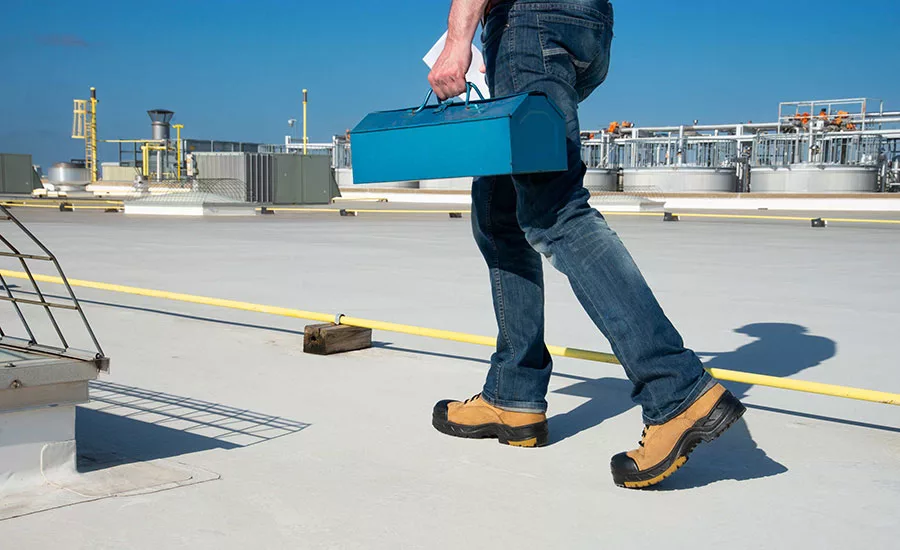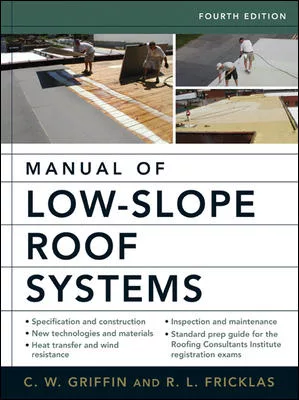The Benefits of Commercial Roof Restoration

When it comes to ensuring the longevity of commercial roofs, full tear-offs and replacements are no longer the only option for contractors and building owners — nor are they always the best.
Commercial roof restoration has increasingly become a viable alternative for any roof type, whether metal, single-ply or a built-up/modified bitumen system.
There are many benefits to roof restoration practices. Most notably, they effectively ensure commercial roofs regain and maintain their full performance potential throughout their lifetimes and at just a fraction of the cost of a complete replacement.
Each commercial roof type has its problems and common points of failure. Here’s how various types of materials stand up to the test of time and what factors to consider in restoring them.
Metal Roof Restoration
For metal roofs, the most common issues are seam laps, rusted spots, improperly repaired or patched metal, failure points in flashing and curb details, and penetrations where leaks begin around the seams or screw heads.
So, what kinds of metal roof restoration services are available?
Addressing horizontal and vertical seams to ensure protection against wind-driven rain.
Replacing and securing fasteners that are loose or backing out.
Repairing penetrations, including around skylights, curbs, roof vents, plumbing vents, and more.
Single Ply Roof Restoration
Whether an EPDM, a TPO or PVC single-ply roof, it all comes down to seams. Everything is a seam and thus, the most common form of failure, from heat- to chemically-welded materials. Seams should be probed and checked for openings, especially the inside and outside corners. Bubbling and blistering also occur with fully adhered single-ply roofing.
Single-ply roof restoration services include:
- Addressing seams using self-adhering repair tape and other reinforcements.
- Evaluating tie-ins, including equipment curbs throughout the roof and all flashings and inside/outside corners.
- Fixing tears, cuts, splits and burns, which are all very common on single-ply roof systems.
Built-Up/Modified Bitumen Roof Restoration
Built-up or modified bitumen roofs can present a variety of issues. Gaps at seams can quickly lead to leaks; improper detailing and shoddy flashing can result in damp insulation; and blisters, failed coatings and failed restorations can all result in compromised roofing incapable of keeping moisture at bay.
These roof restoration services focus on addressing the following:
- Base flashings, curbs, corners and skylights.
- All penetrations, including those directly through the roof deck.
- Drains and waterways.
- Metal edging and seams.
- Splits resulting in gravel build-up or multi-ply roofs indicated by gravel accumulating in a line along the problem area.
PRO TIP: To determine the best industrial single-ply roof restoration product, consider where you’re working. Silicone products typically take 45 minutes before being able to get wet; acrylic material needs just 24 to 48 hours.
Are Roof Restoration Services Right for You?
The good thing is you have options, no matter the type of roof.
While replacement is still necessary in some instances, the roof's overall condition, including its structural deck, insulation and membrane, should be thoroughly analyzed to determine if restoration is the right fit, versus a repair, re-cover, or reroof.
A professional contractor can perform visual and nondestructive testing methods to give you a good idea of the state of the roof, revealing issues like:
- Pooling water
- Soft or sagging areas indicative of saturated insulation
- Rust, rot or cracking in the decking
- Membrane splits
PRO TIP: Infrared thermography can also locate potential wet areas in insulation and is often the cheapest and quickest way to identify moisture.
Several other tests examine the condition of your commercial building roof more thoroughly and help determine whether restoration is the ideal solution. These tests include peel adhesion testing, which determines the viability of roof coating solutions; core cutting, which validates the initial visual moisture survey; and wind uplift testing, which establishes the condition of the existing membrane.
PRO TIP: Keep in mind a good rule of thumb to follow: any roof that is 20%-25% saturated or more will likely need to be replaced in its entirety.
Once your roof has been carefully assessed, tested and analyzed to determine problem areas and the level of damage, you are one step closer to deciding if industrial roof restoration is the right fit for your building. However, there are other important factors to consider, like:
The anticipated lifespan of the building. If the building will likely be leveled, rebuilt or replaced within a handful of years, this should be factored into whether the roof is repaired, restored, recovered or reroofed completely.
Plans to expand the building in the future. Knowing the owner’s expectations for future additions to the building is a key component in the decision-making process.
Location of the building and seasonal conditions of the area. The weather often dictates the best time to conduct roof work. Repairing or restoring the roof of a building located in Florida, for example, will be nearly impossible during rainy parts of the year when the likelihood of hurricanes is highest. Often, all that happens during this time frame are simple, short-term fixes.
The purpose the building serves. For example, think about hospitals versus warehouses. The application and needs for each of these buildings are completely different, and their services significantly impact the repairs necessary to ensure structural stability and safety.
PRO TIP: Have a structural engineer evaluate your facility, especially if the entity is located near the coast. These professionals are vital in determining if the structural components of your building are strong enough to support a roof restoration or other roof maintenance project.
Not only does restoration reduce the likelihood of failure, but it also extends the longevity of your commercial roof, regardless of type. Restoration, paired with regular health checks and necessary upkeep, helps ensure easier maintenance and inspection throughout the roof’s lifetime.
Interested in learning more about roof restoration? Contact the APOC team today to learn from the experts, or visit APOC.com.
Looking for a reprint of this article?
From high-res PDFs to custom plaques, order your copy today!



.webp?height=200&t=1652212100&width=200)


